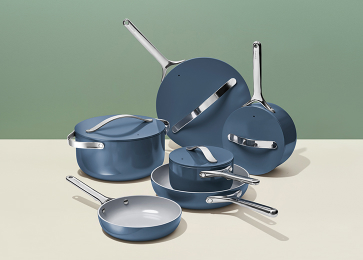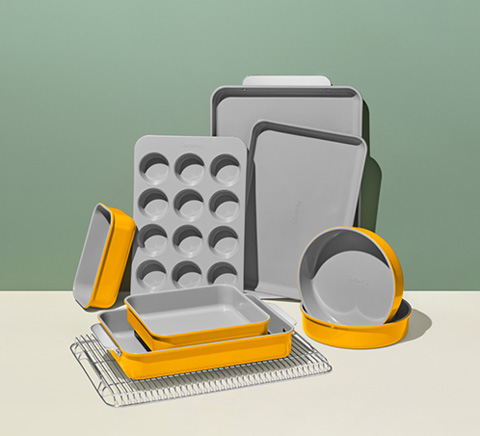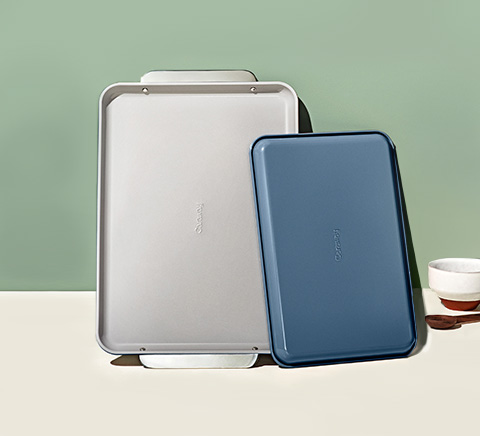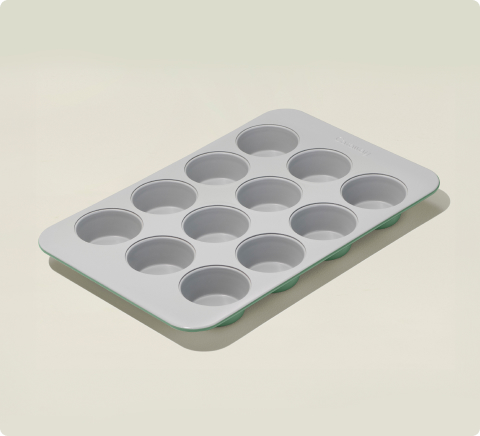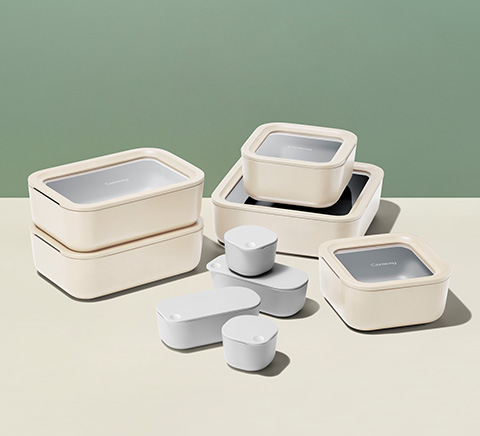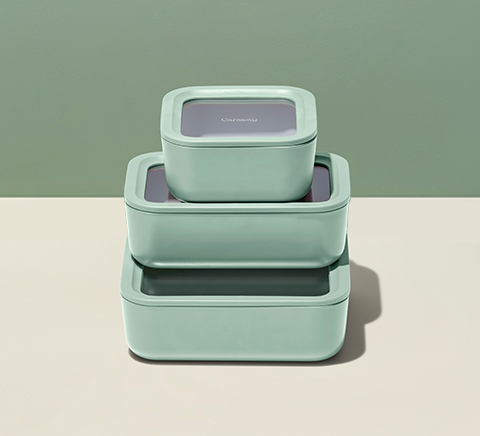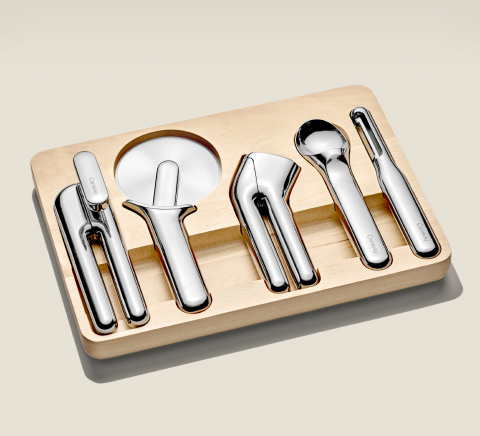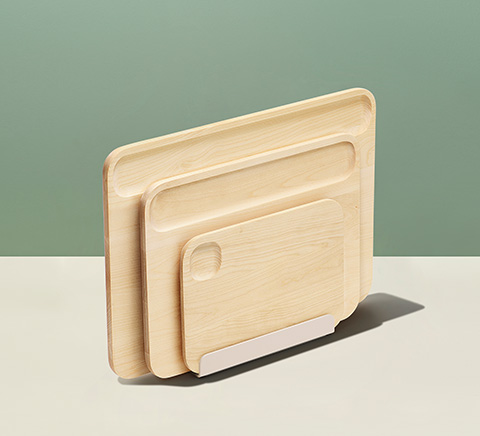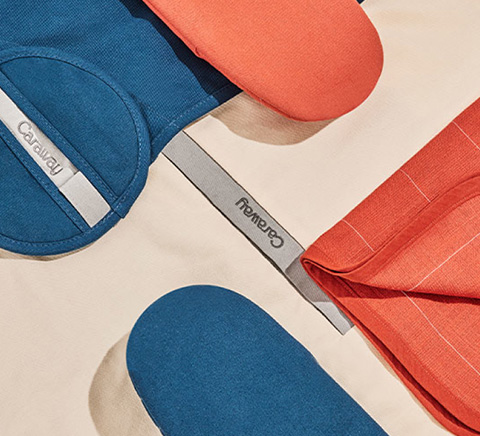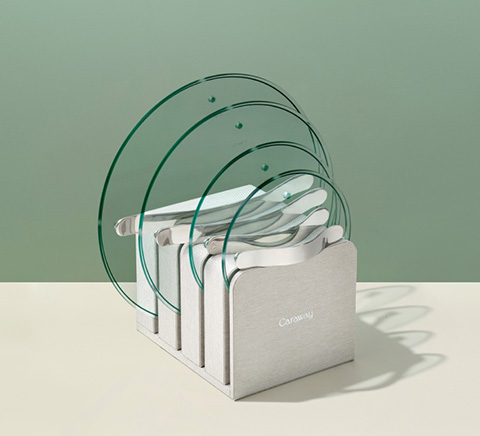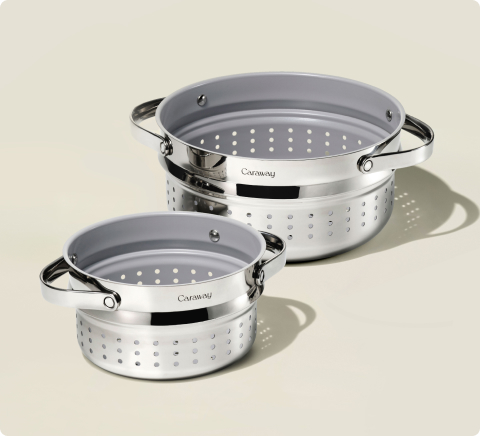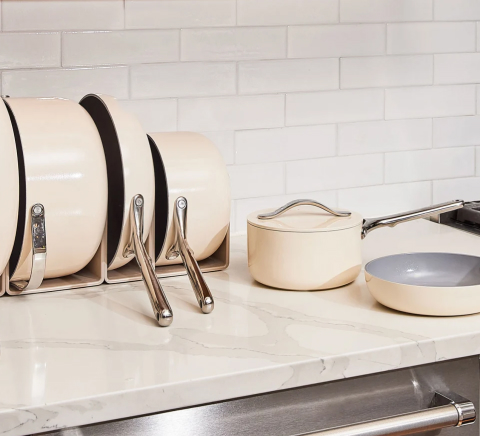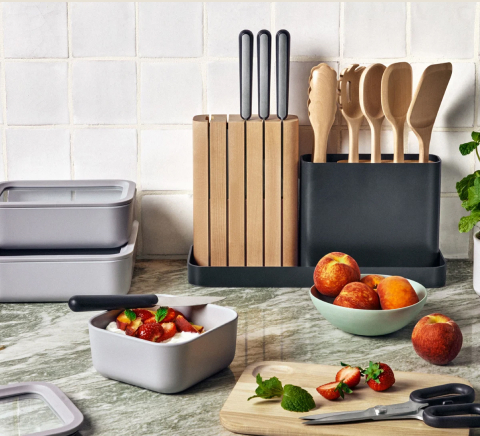Today, we're looking into the nitty-gritty of cast iron care, specifically tackling something we all dread---rust. If you're a fan of the timeless charm and unbeatable cooking performance of cast iron cookware, you know that rust can be an unwelcome guest.
Thankfully, with the right materials, you can keep your cast iron in tip-top shape.
Why Does Cast Iron Skillet Rust?
Cast iron rusts because it's made of iron, which reacts with moisture and oxygen to form iron oxide, commonly known as rust. This reaction can happen surprisingly quickly if your cookware isn't properly cared for.
When iron is exposed to moisture---whether it's from washing, cooking, or just the humidity in the air---it begins to oxidize. Over time, this oxidation process can lead to rust. The good news is that this is completely preventable with proper care and maintenance.
We at Caraway offer enameled cast iron that's far more resistant to rust. The enamel coating acts as a barrier, protecting the iron from moisture and oxygen.
So, if rust is your primary concern, enameled cast iron might be a great option for you. This type of cookware combines the heat retention and distribution benefits of cast iron with the ease of maintenance provided by the enamel coating.

What Are Common Types of Rust?
Surface Rust
Surface rust is the most common and least severe type of rust you'll encounter. It's typically a light, orange-brown color and can be easily removed. You might notice it in areas where the seasoning has worn thin.
A specific type of surface rust can appear as "rack marks," which are small marks where the piece was set down for the coating to cure. This is completely normal and can be covered with a small amount of high-smoke point oil like grapeseed oil.
Deep Rust
Deep rust occurs when the cast iron has been exposed to moisture for an extended period, or if it has been stored improperly. Addressing deep rust quickly is crucial to maintaining the integrity of your cookware.
Flaking
Flaking rust is the most severe type and occurs when the rust has caused the metal to deteriorate to the point where it breaks off in flakes. This usually happens if the rust has been left untreated for a long time. Flaking rust can be a sign that the structural integrity of the cast iron is compromised.

What Are the Best Tools for Cast Iron Restoration?
Here are some of the best tools for getting a rusty cast iron skillet to look its best again.
Steel Wool
Steel wool is excellent for scrubbing off rust. It's abrasive enough to remove the rust but gentle enough not to damage the cast iron. When choosing steel wool, opt for medium or coarse grades. These will provide the right amount of abrasiveness to tackle rust without scratching the cast iron.
Scrubbers
Scrubbers, especially those designed for cast iron, can be very effective. Look for ones that are durable and can handle tough scrubbing. Scrubbers made from materials like stainless steel or copper are great choices. Avoid using scrubbers that might break apart during use, as these can leave behind residues.
Dish Soap
Dish soap helps break down grease and grime, making it easier to scrub off the rust. Choose a mild, grease-fighting dish soap. Harsh detergents can strip away the seasoning, so it's best to stick with something gentle but effective.

White Vinegar
White vinegar is acidic and can help dissolve rust. It's especially useful for soaking larger areas of rust. When using vinegar, it's important to dilute it with water to prevent over-acidifying the cast iron. A 50/50 mixture of white vinegar and water is typically effective for rust removal.
Baking Soda
Baking soda is a mild abrasive and can be used to make a paste that helps lift rust. It's also great for neutralizing any remaining acidity from the vinegar soak. Baking soda is non-toxic and safe to use, making it a versatile option for cleaning cast iron.
Oils
High-smoke point oils like grapeseed oil and canola oil are essential for reseasoning your cast iron after rust removal. These oils help create a durable, non-stick layer on your cast iron. Other good options include vegetable oil and flaxseed oil. Avoid using oils with low smoke points, as these can burn and leave a sticky residue.
How To Remove Rust From a Cast Iron Pan
Assess the Rust
First, take a good look at your rusted cast iron to assess the extent of damage. This will help you determine the best method for removal. Surface rust can often be handled with a quick scrub, while deeper rust may require soaking and more intensive scrubbing.
Soak in Vinegar
For surface rust, a quick soak in a 50/50 mixture of white vinegar and water can work wonders. For more stubborn rust, you might need to soak it for a longer period, but be careful not to leave it too long, as vinegar can start to eat away at the iron itself. A good rule of thumb is to check the cast iron every 30 minutes during the soak.
Scrub With Steel Wool
After soaking, scrub the rusted areas with steel wool. Use circular motions and a bit of pressure to lift the rust. Make sure to focus on the rust spots while avoiding any areas that are already well-seasoned. Rinse the cast iron periodically to check your progress and prevent scratching.
Use Baking Soda
Make a paste with baking soda and water and apply it to any remaining rust spots. Scrub with a scrubber or a brush to lift the rust. Baking soda helps neutralize the acidity of the vinegar and acts as a mild abrasive to remove any lingering rust particles. Rinse thoroughly with water to remove all traces of the paste.
Rinse and Dry
Once the rust is removed, rinse the cast iron thoroughly with water and dry it completely. Moisture is your enemy here, so make sure it's bone dry. You can dry it with a towel and then place it on a stove burner over low heat to ensure all moisture is evaporated.
How To Re-Season and Restore Your Cast Iron
Now that your cast iron is rust-free, it's time to re-season it. The seasoning process helps protect the metal and gives your cookware that non-stick quality.
Here's a step-by-step guide:
Apply a Thin Layer of Cooking Oil
Use a high-smoke point oil like grapeseed oil and apply a thin protective layer to the entire surface of the cast iron. Use a cloth or paper towel to spread the oil evenly, ensuring that all surfaces, including the handle and the bottom, are covered. Too much oil can create a sticky residue, so make sure to wipe off any excess.
Bake
Place the cast iron upside down in the oven with a baking sheet or foil below to catch any drips. Bake between 300 and 450°F (230°C) for about an hour. The high heat allows the oil to polymerize and form a protective, non-stick layer on the cast iron. This process can be repeated several times for a more durable seasoning.
Cool
Let the cast iron cool in the oven to allow the oil to set and create a non-stick layer. Once it's cool, your cast iron should have a smooth, shiny finish. If you notice any sticky spots, you can buff them out with a little more oil and another round in the oven.
Is Enameled Cast Iron Cleaned Differently?
Enameled cast iron doesn't rust because of its enamel coating. This means you don't need to worry about rust removal or seasoning. However, it's still important to clean it properly to maintain the enamel.
No Steel Wool
Avoid using abrasive materials like steel wool, which can damage the enamel. Instead, use soft sponges or nylon scrubbers that won't scratch the surface. If you encounter stubborn stains, a paste of baking soda and water can be effective without being abrasive.
Mild Soap
Use mild dish soap and a soft sponge to clean. Harsh detergents can damage the enamel over time, so stick to gentle cleaners. After washing, rinse thoroughly to ensure no soap residue is left behind.
Avoid Sudden Temperature Changes
Enameled cast iron can crack if exposed to sudden temperature changes, so avoid placing a hot pot into cold water --- hot water is usually safer. Allow the cookware to cool down gradually before cleaning. Sudden temperature changes can cause the enamel to expand and contract rapidly, leading to cracks or chips.
How To Prevent Rust in the Future
Prevention is always better than cure. Here are some tips to keep your cast iron rust-free:
Proper Cleaning Techniques
After cooking, clean your cast iron with warm water and a brush. Avoid using soap unless absolutely necessary.
Drying
Always dry your cast iron completely after washing. You can do this by placing it on a stove burner over low heat for a few minutes.
Storage
Store your cast iron in a dry place. If you live in a humid area, placing a paper towel inside the skillet can help absorb any moisture. Avoid stacking cast iron pieces directly on top of each other, as this can trap moisture and lead to rust.
Avoid Acidic Foods
Cooking acidic foods like tomatoes can strip the seasoning from your favorite cookware set, making it more prone to rust. If you do cook acidic foods, be sure to re-season your pan afterward.
A Final Word on Cast Iron Rust
Rust on an old cast iron pan can be a headache, but with a little knowledge and effort, you can keep your cookware in great shape. Enameled Cast Iron from Caraway is a fantastic option if you want to avoid rust altogether.
Sources:
A Review on Heat Treatment of Cast Iron: Phase Evolution and Mechanical Characterization | PMC
Grapeseed Oil --- Is It a Healthy Cooking Oil? | Healthline
Ask the Expert: Concerns about canola oil | Nutrition Source
